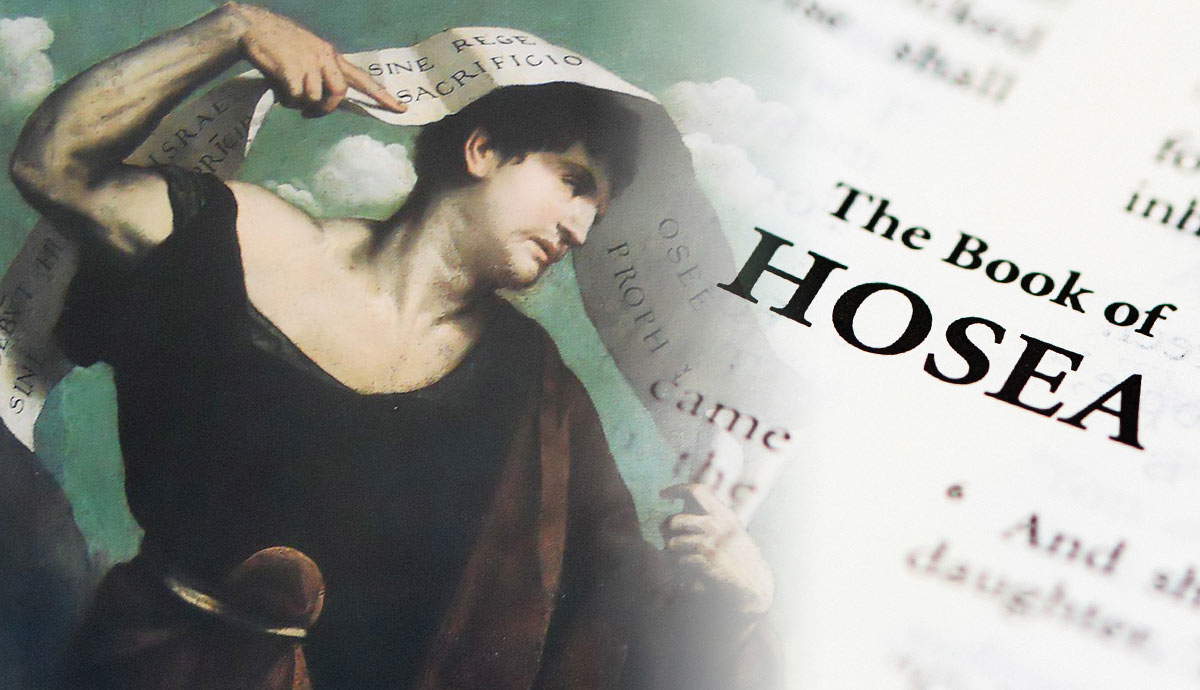
David’s slaying of Goliath is one of the Bible’s most well-known stories. But the story’s plot line in the Hebrew Bible contains three confusing wrinkles. First, the reader is introduced to David twice in the narrative. Second, David meets Saul, the king of Israel, twice in the story, apparently for the first time in both instances. Third, David kills Goliath twice. These wrinkles resulted from how the text was constructed. Originally, there were at least two David and Goliath stories. They have been stitched together in the Hebrew Bible.
David and Goliath in the Old Greek Bible

The oldest known translation of the Hebrew Bible is in Greek. This ancient translation was first created in Alexandria, Egypt in the 3rd century BCE. By that time, most Jews who lived both outside and inside the land of Israel spoke languages other than Hebrew as their native tongues. One of these was Greek. According to a tradition preserved in a document called the Letter of Aristeas (considered at least partly fictional by most scholars), the chief librarian of the great library at Alexandria, Demetrios of Phaleron, persuaded the (Greek) king of Egypt, Ptolemy II Philadelphus, to commission the translation of the Hebrew Torah—the first five books of the Bible—into Greek to enrich the library’s collection.
Ptolemy II enthusiastically agreed, and six Jewish scholars from each of the twelve Israelite tribes—72 in all—are said to have participated. Rounding down this number of translators, the translation became known as the “Septuagint,” from the Latin for “70.” But it is also often called simply the Old Greek Bible. Eventually, Greek translations not only of the Torah but of all the books of the Hebrew Bible were collected and bound into a single volume—along with some other books—and subsumed under this title.
What does the Old Greek translation have to do with the “wrinkles” in the David and Goliath story? By a happy coincidence, a comparison of this famous story’s tellings in the Old Greek and Hebrew Bibles opens a window into how the ancient compilers and editors of the Bible weaved their sources together.
Sword or Stone? Two Tellings of the Story

Salvator Rosa’s painting of David slaying Goliath (ca. 1640-1), which was adapted for the print by Richard Earlom pictured above, is a puzzling depiction for many familiar with the story. Goliath is clearly alive, and David stands over him with a sword in hand. A similar scenario is apparent in Daniele da Volterra’s David and Goliath and in Francesco Fanelli’s sculpture of the same scene. Was it not a sling and stone that killed the giant?

As noted above, the Hebrew Bible, confusingly, has Goliath being killed twice—once by each weapon. In the Old Greek telling, however, Goliath only falls on his face upon being struck with the stone. Whether or not he would have died from this traumatic wound remains hypothetical as David rushes forward and kills the Philistine with his own blade. In other words, unlike in the Hebrew text, Goliath dies only once in the Old Greek.
At first guess, it might be supposed that the translators of the Old Greek have tried to iron out a wrinkle in what they saw in the Hebrew text. But there is a much more likely possibility: there were at least two independent versions of this story in circulation, and the translators of the Old Greek were either unaware of one of them or chose not to include it.
Finding the Bible’s Original “Sources”

The Hebrew Bible is a collection of many books, but scholars also agree that some of those individual books were put together using various “sources”—by which they mean the oldest texts or oral traditions that were finally compiled to create the form of the Bible we have today. Notwithstanding this agreement, in many cases, scholars struggle to come to a consensus on the original nature of those sources—as well as about when, how, and by whom they were finally pieced together. Part of the reason for this struggle stems from the fact that the sources no longer exist independently. In other words, detecting them involves working backward from the biblical text available now through the principles of a complex process called “source criticism.”
A good example of where two sources can be discerned in the Bible about which there is widespread agreement among scholars is the creation stories of Genesis chapters one and two. But in cases such as this, the sources were not passed down independently anywhere, being preserved only together in the book we call Genesis today.
This is what makes the case of the David and Goliath story different. The line between the (at least) two sources that are behind this story’s appearance in the Hebrew Bible can be clearly drawn because one of them has been preserved apart from the other in the Old Greek Bible.
Wrinkle 1: Confusion About David’s Career Path

The story of David begins in the sixteenth chapter of the book of 1 Samuel. The Prophet Samuel, for whom the book is named, is told by God to anoint David the next king of Israel, which Samuel proceeds to do, apparently without Saul’s knowledge (for obvious reasons). In the second half of the same chapter, the reader is informed that Saul has begun to experience episodes of spiritual torment. Saul’s attendants suggest to him that hiring a court musician would be a good remedy and, in a coincidence worthy of cinema, David is hired to enter the court for this purpose.
Not only does David’s music calm Saul’s troubled soul, but Saul grows to love and trust David so deeply that he makes him his personal armor-bearer. This episode, which is indispensable to the Saul-David saga to follow, appears in both the Old Greek and Hebrew Bibles. The same can be said of the first portion of chapter seventeen, in which Israel’s face-off with the Philistines, which will lead to David’s confrontation with Goliath, is introduced.

But then the first wrinkle appears. In chapter seventeen, verse twelve of the Hebrew Bible’s telling, the reader is introduced to David as if for the first time—despite the fact that a chapter’s worth of his background has just been told. The text here presents David as still primarily a shepherd—not the king’s armor-bearer—being sent by his father to bring his brothers food on the battlefront. This is the first wrinkle in the story, but there are more to come.
Wrinkle 2: Saul Meets David Twice in the Story

In verse 32, when the Hebrew and Old Greek narratives finally align again, David is trying to persuade Saul to allow him to fight the giant (incidentally, Goliath is a full two cubits shorter in the Old Greek version than he is in the Hebrew Bible). In the Old Greek, this scene follows smoothly from the previous narrative, since as Saul’s armor-bearer David would have been almost always in Saul’s proximity. The Hebrew Bible explains, by contrast, that David’s desire to fight Goliath reached Saul’s ears as if by rumor.
The Hebrew and Old Greek narratives largely run parallel for most—though not all—of what follows until the end of the chapter, where the Hebrew Bible includes another curious detail that is absent from the Old Greek. Verses 55 to the sixth verse of chapter 18 relate that Saul, after witnessing David’s victory over Goliath and the Israelite forces’ subsequent routing of the Philistine army, asked his chief military commander Abner who David’s son was. Abner, in turn, replies that he does not know. This leaves the reader wondering how both Saul and Abner could not have known who David was, since he was one of Saul’s personal, daily attendants.
Wrinkle 3: Goliath Dies Twice

The wrinkle in the story that entitles this article appears in verse fifty. The King James Version of this verse says, “So David prevailed over the Philistine with a sling and with a stone, and smote the Philistine, and slew him; but there was no sword in the hand of David” (emphasis added). This verse, which is absent from the Old Greek rendition, is difficult for the reader to reconcile with verse 51, which says, “Therefore David ran, and stood upon the Philistine, and took his sword, and drew it out of the sheath thereof, and slew him, and cut off his head therewith” (emphasis added). And so appears the third wrinkle in the story—all three of which are present only in the Hebrew Bible, not the Old Greek. These wrinkles are easy enough to pass over but are nevertheless noticeable even to the casual reader.
The Wrinkles Are Actually Seams

All of these contradictory elements in the storyline are absent in the Old Greek version’s telling. Furthermore, if one pieces together the elements that are present in the Hebrew Bible that are absent from the Old Greek Bible, the wrinkle analogy gives way to a better one: these are not wrinkles in a single story, but the seams that resulted from two distinct stories having been stitched together.
Apparently, there were at least two accounts of David’s early career—the least public period of his life—that circulated among the Jewish communities that preserved the Bible for posterity. Unwilling to set one aside in favor of the other, scribes took both accounts and tried to piece them together into a single narrative. This resulted, not in a seamless, but a “seamed” retelling of a treasured story.
Given the necessity of secrecy surrounding Samuel’s involvement in David’s rise to the throne, the mysterious nature of Saul’s spiritual torment, and the fact that in the thick of battle without video recordings it would have been difficult to discern—much less remember—exactly when Goliath’s life was taken from him, one can understand why various versions of the story would have emerged. For whatever reason, the scribes to whom future generations of Bible readers owe their gratitude for its preservation preferred to leave the text’s seams in place. They left a text that appears wrinkly but thanks to another scribal tradition—the one that gave us the Septuagint—the wrinkles are shown to be seams.











